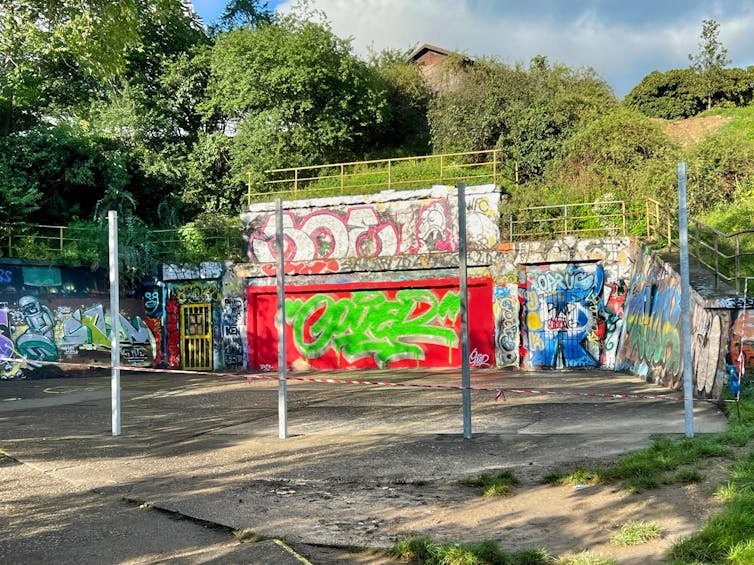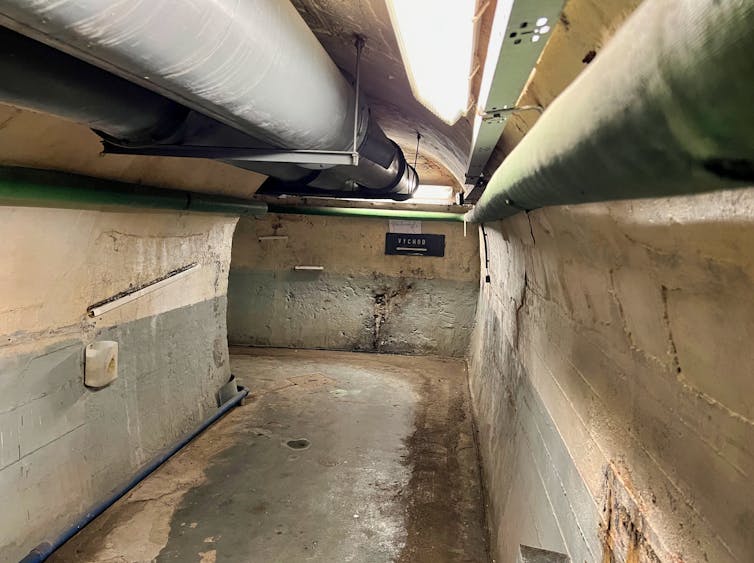I Visited Nuclear Shelters to See How Cities Could Prepare for Nuclear War

With the ongoing Ukraine war, tensions in Europe are on the rise. This is both due to an influx of war related-refugees to Central European cities, and discontent over the related rising cost of energy.
As bombs fall on Ukraine, European nations are waking up to the sorry state of their own civil defence. Currently in Kyiv, emergency workers are preparing 425 shelters for use during a nuclear war.
My research on civil defence for nuclear war led me to explore how central European cities are preparing. I recently returned from a faculty exchange in the Czech Republic, where I investigated the availability of nuclear fallout shelters in Prague.
Current events show that Russia is searching for a pretext to unleash nuclear weapons. The C.I.A. director met with his Russian counterpart on Monday to warn against the use of nuclear weapons in Ukraine. In Europe, fears of bunking down for COVID-19 lockdowns are being replaced with fears of bunking down in shelters for nuclear attacks.
In the Czech Republic, my findings from a case study of preparedness in the capitol city of Prague have shown that leftover Cold War-era bunkers are currently kept in a state of readiness to protect the population from nuclear war.
Also Read: Russia-Ukraine Conflict: What are the Nuclear Risks?
Czech Infrastructure
Born out of the Velvet Revolution in 1989, for much of the 20th century, what is now the Czech Republic existed as Czechoslovakia under the Soviet sphere of influence.
In the context of the Cold War, belief in the duty to defend against external enemies and ideologies of militarism resulted in massive civil works projects building underground bunkers.
The development of Czechoslovak civil defence included not only the building of bunkers, but also school education focused on topics of moral awareness, physical fitness and civil defence training.
After the Iron Curtain fell, citizens of the Czech Republic rejected communism in favour of parliamentary democracy. However, the leftover communist era physical infrastructure for civil defence remains mostly intact.
Also Read: The Women of War, a Review of “Our Mothers’ War”
Prague’s Nuclear Bunkers
In 2019, it was estimated that there were 768 permanent shelters in Prague, with a total capacity for about 150,000 people.
Municipal authorities are obliged by law to provide shelters, and Prague’s nuclear bunkers take on many forms. Blast and fallout shelters are built into hillsides, found in various tunnels, located in deep sections of the subway, and installed in reinforced basements of buildings.

I visited the Bezovka Shelter in Prague’s Žižkov district. To enter it, I had to enter through a graffiti covered reinforced steel door at Parukářka Park.
The Bezovka shelter was built in the mid-1950s, and can hold more than 2,000 people. Currently, it is a site for commercial tourism and a venue for nightlife. Part of the shelter is open to the public for nuclear bunker tours that highlight aspects of life during the Cold War — sights include life-size dioramas depicting stereotypical life in a bunker during nuclear Armageddon, complete with mannequins of children in rubber gas masks.
I also visited the Folimanka Bunker, located in the Prague 2 district. This underground complex was an example of a public shelter designed for a neighbourhood. Corridors measuring 125 meters connected a labyrinth of underground rooms, totalling 1,332 square metres in area.
Completed in 1962, with its own power generator, running water and ventilation system, this bunker is still operational today for sheltering 1,300 people for a duration of 72 hours. The city agency for the Administration of Services of the Capital City of Prague runs the shelter and opens it to the public on occasional weekends for a self-guided walk through.

Also Read: A Call for War Against Close-Mindedness
Obsolete Equipment
The underground bunkers were a material embodiment of a post-communist aesthetic. Surrounded by obsolete equipment in decaying mazes of tunnels, I felt like I was in a dystopian subterranean wasteland.
Despite their appearance, however, the bunkers are not just relics of a past era.
Over the years, some of Prague’s nuclear bunkers have been adapted to new and creative reuses. Rather than abandonment, new uses have prevailed like museum spaces, tourist attractions, spots for escape room games, places for nightlife and music, creative arts spaces, or storage sites.
I am not suggesting that having shelters available would reduce the overall horror of nuclear war. Should Putin risk using nuclear weapons, no state or international body could adequately address the immediate humanitarian emergency.
In Prague, at this very moment, tens of thousands of residents may have access to sheltering options available to them in case of a nuclear war. But if atomic weapons are used, only then will people worldwide fully realize that we have no reasonable way of protecting ourselves.
This article was first published on The Conversation, a global media resource that provides cutting edge ideas and people who know what they are talking about.






















